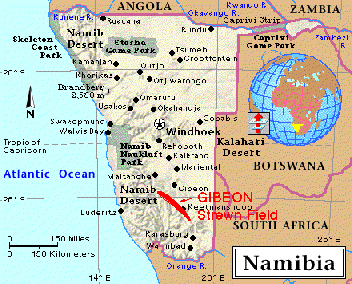Actually it was found somewhere else, but nobody is telling:)
Olivine is throughout the large mass
Olivine crystals vary in shape from rounded to angular
many are fractured. They range in size from 5 mm to several cm wide.
The main pallasite contains several regions of massive olivine clusters
up to 11 cm in diameter with thin metal veins only a few mm in width.
1003 kilo's of this was found
Click below for a Meteoritical Bulletin update on Fukang

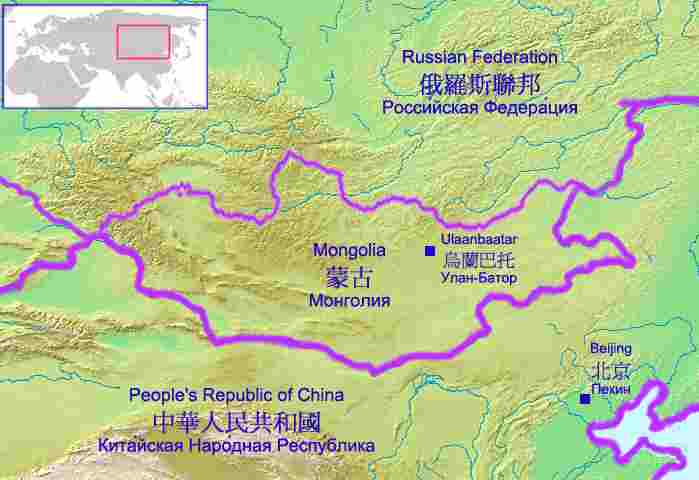
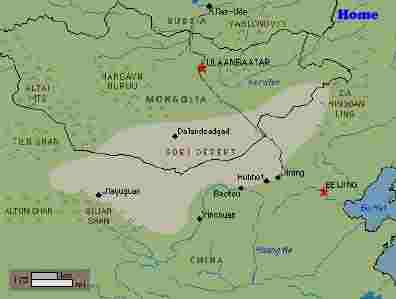
The gray area shows the Gobi desert in inner Mongolia, China
Henbury
Henbury - Northern Territory, Australia
Type - Iron, Nickel Iron Medium Octahedrite
Class - (III)
Found - 1931
This meteorite was found in 1931,
thirteen craters were discovered within a radius of 1/2 square mile.
Large quantities of this meteorite were removed from the area,
over the years the strewn field has been completely stripped of its fragments.
It fell about 5000 years ago.
It was in an area the native people call Sun Walk Fire Devil Rock
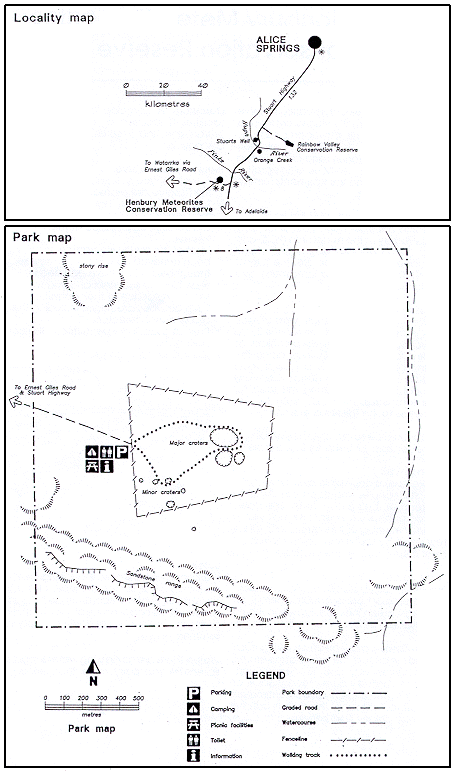 hit the back button on your browser to go back
Henbury
Henbury - Northern Territory, Australia
hit the back button on your browser to go back
Henbury
Henbury - Northern Territory, Australia
Type - Iron, Nickel Iron Medium Octahedrite
Class - (III)
Found - 1931
This meteorite was found in 1931,
thirteen craters were discovered within a radius of 1/2 square mile.
Large quantities of this meteorite were removed from the area,
over the years the strewn field has been completely stripped of its fragments.
It fell about 5000 years ago.
It was in an area the native people call Sun Walk Fire Devil Rock
 Back to Picture
Holbrook
Holbrook-Navajo County, Arizona, U.S.A.
Back to Picture
Holbrook
Holbrook-Navajo County, Arizona, U.S.A.
Type - Stone,Olivine-hypersthene chondrite
Class -(L6)
Fell - July 19, 1912 6:30 P.M.
On July 19,1912 at a small railroad station just east of Holbrook a rain of tiny stones fell.
14,000 stones were collected and distributed to collections all over the world - a very famous and well known fall.
29 individuals over 1000 grams, 6000 individuals 1 to 1000 grams, 8000 under a gram.
It fell in an area 1/2 mile wide and 3 miles long
Heres a break down of the amount and sizes found
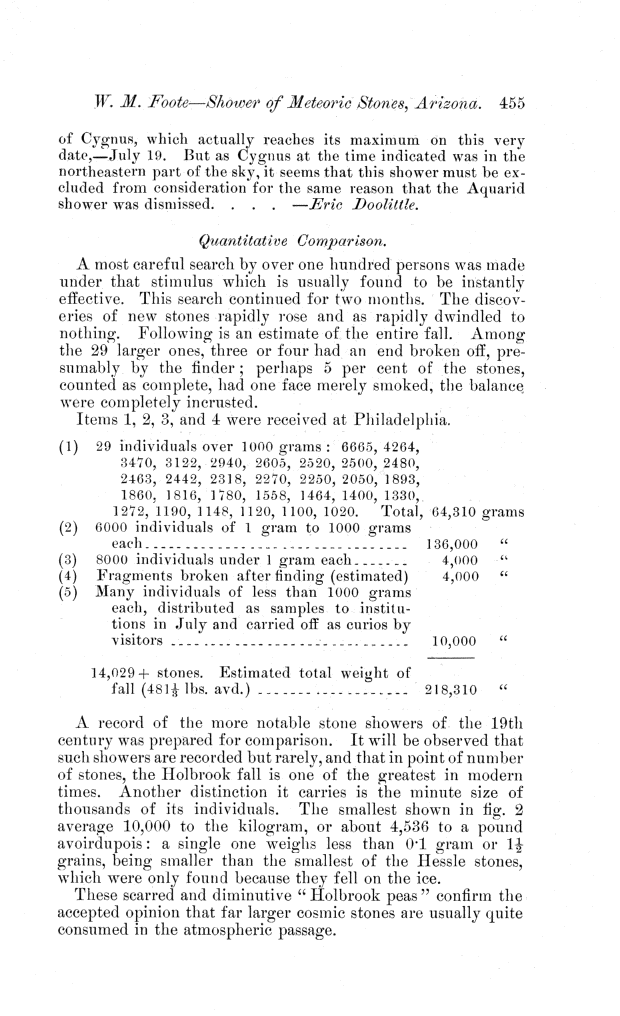
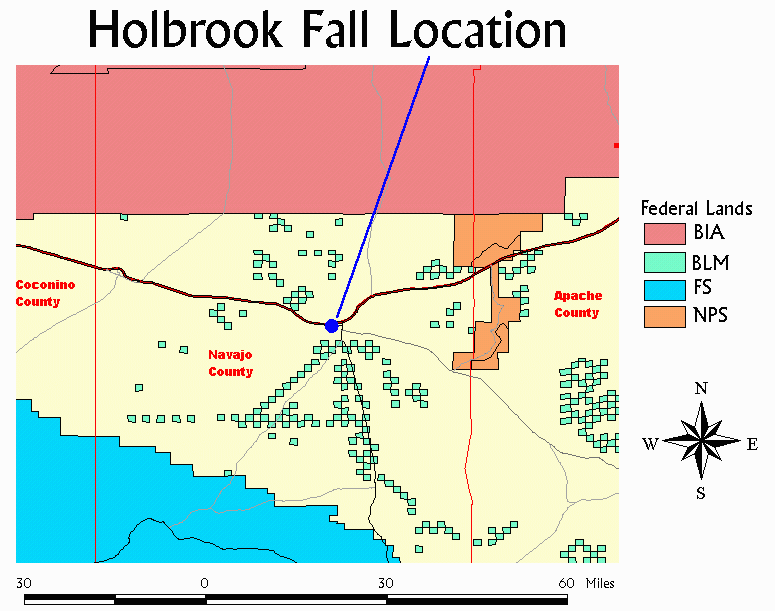 Back to Picture
Huckitta
Northern Territory- Australia
Back to Picture
Huckitta
Northern Territory- Australia
Type - Pallasite
Class -(PAL) Stony - iron
Found - 1924
The meteorite was found in the Burt Plains of Northwestern Australia.
This is a weathered pallasite, it is very old, in fact the iron and olivene have turned to hematite and magnetite.
A really fascinating meteorite to look at with a ghostly image of it's former condition.
The surface exhibits a typical black gunmetal color as often seen.
These examples that will make a nice addition to any collection and are available at a low price.
Back to Picture
Imilac
Imilac - Atacama Desert, Atacama, Chile
Type - Stoney-Iron, Pallasite
Class - (PAL)
Found - 1822 in a valley southwest of Imilac, Chile
This exquisite pallasite has large
olivine crystals, the olivine crystals are embedded in a nickel-iron matrix.
The strewn field is still hunted today.
Only one crater is recognized in the area, Stony irons are rare and only make up 1.7% of falls
Back to Picture
Imilac
Imilac - Atacama Desert, Atacama,Chile
Type - Stoney-Iron, Pallasite
Class - (PAL)
Found - 1822 in a valley southwest of Imilac, Chile
This exquisite pallasite has large
olivine crystals, the olivine crystals are embedded in a nickel-iron matrix.
The strewn field is still hunted today.
This meteorite is used in making jewelry, Stony irons are rare and only make up 1.7% of falls
Back to Picture
Imilac
Imilac - Atacama Desert, Atacama,Chile
Type - Stoney-Iron, Pallasite
Class - (PAL)
Found - 1822 in a valley southwest of Imilac, Chile
This exquisite pallasite has large
olivine crystals, the olivine crystals are embedded in a nickel-iron matrix.
The strewn field is still hunted today.
This meteorite is used in making jewelry, Stony irons are rare and only make up 1.7% of falls
Back to Picture
Indochinite
Indochinites are found primarily in Southern China, Thailand, and Vietnam. They appear in many shapes that include disc, dumbbells, teardrops and irregular shapes. Called splash - form tektites, they illustrate what happens to molten glass spinning in flight. Following the impact of an asteroid, melted material is launched into our atmosphere. As this molten blob plunges back to Earth, it shapes itself aerodynamically into a dumbbell, if there was enough time in flight the dumbbell splits apart to become two tear drops.
Back to Picture
